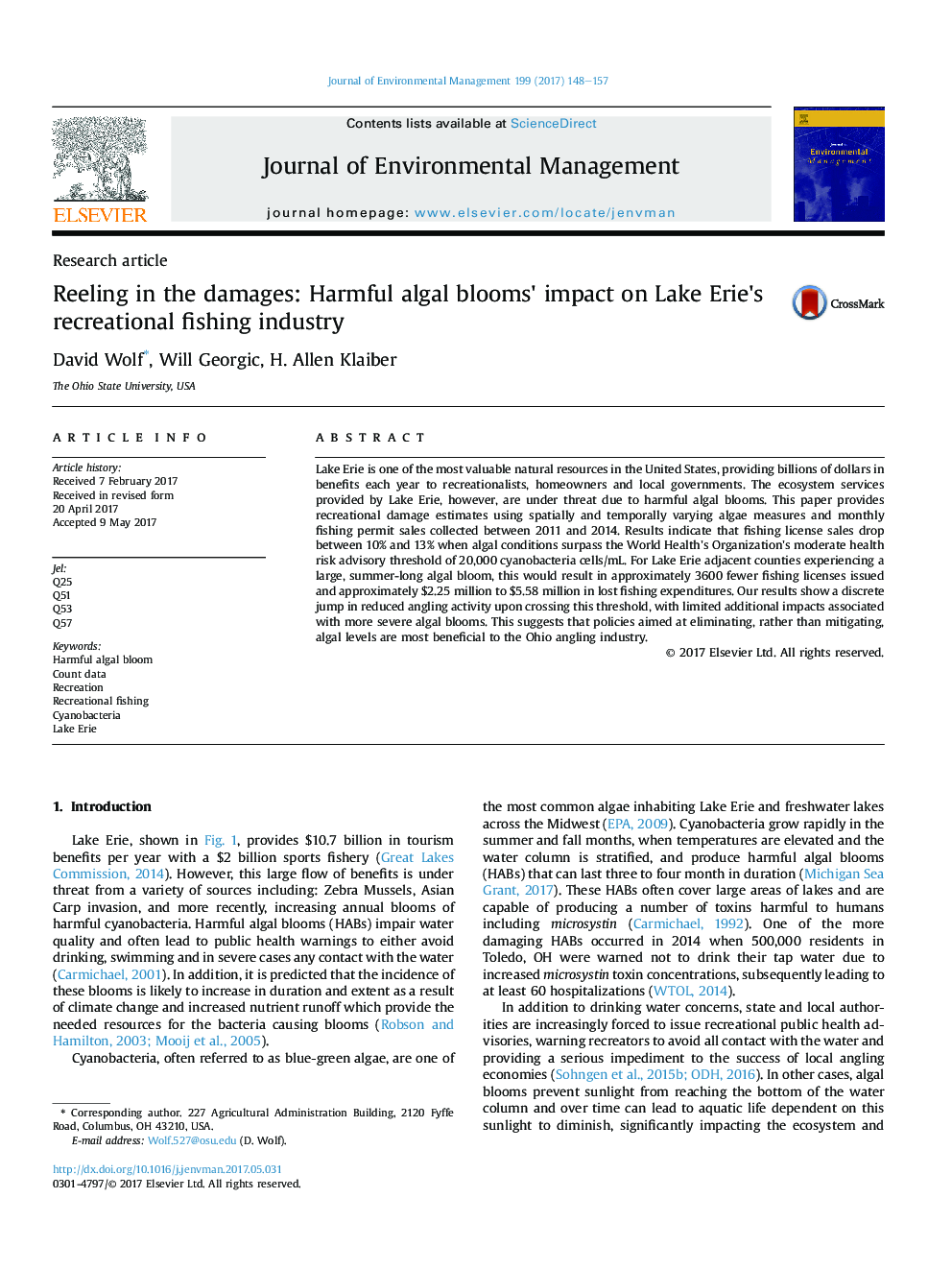| Article ID | Journal | Published Year | Pages | File Type |
|---|---|---|---|---|
| 5116617 | Journal of Environmental Management | 2017 | 10 Pages |
Abstract
Lake Erie is one of the most valuable natural resources in the United States, providing billions of dollars in benefits each year to recreationalists, homeowners and local governments. The ecosystem services provided by Lake Erie, however, are under threat due to harmful algal blooms. This paper provides recreational damage estimates using spatially and temporally varying algae measures and monthly fishing permit sales collected between 2011 and 2014. Results indicate that fishing license sales drop between 10% and 13% when algal conditions surpass the World Health's Organization's moderate health risk advisory threshold of 20,000 cyanobacteria cells/mL. For Lake Erie adjacent counties experiencing a large, summer-long algal bloom, this would result in approximately 3600 fewer fishing licenses issued and approximately $2.25 million to $5.58 million in lost fishing expenditures. Our results show a discrete jump in reduced angling activity upon crossing this threshold, with limited additional impacts associated with more severe algal blooms. This suggests that policies aimed at eliminating, rather than mitigating, algal levels are most beneficial to the Ohio angling industry.
Keywords
Related Topics
Physical Sciences and Engineering
Energy
Renewable Energy, Sustainability and the Environment
Authors
David Wolf, Will Georgic, H. Allen Klaiber,
